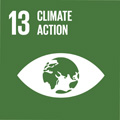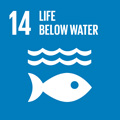- Docente: Claudia Romagnoli
- Credits: 6
- SSD: GEO/02
- Language: Italian
- Moduli: Claudia Romagnoli (Modulo 1) Fabiano Gamberi (Modulo 2)
- Teaching Mode: Traditional lectures (Modulo 1) Traditional lectures (Modulo 2)
- Campus: Bologna
- Corso: Second cycle degree programme (LM) in Geology and Territory (cod. 9073)
-
from Feb 19, 2024 to May 06, 2024
Learning outcomes
The course proposes the basic knowledge on the main geological processes involved in the formation and evolution of continental margins from the coast to oceans. The students will acquire competencies on: - the geological setting of Italian Seas, with particular regard to their late-Quaternary evolution; - geological hazard in the marine environment; - main techniques os survey, sampling and mapping of marine and coastal areas.
Course contents
Introduction: development of Marine Geology and contribution to the “Plate tectonics” model. Th advancement of survey techniques in the marine environment: principles of main geological- geophysical techniques for the study, sampling, mapping and monitoring of marine areas.
Physiography of the seafloor: structure and evolution of continental margins and oceanic basins in relation to their geodynamic setting.
Processes in the marine environment: ocean and littoral circulation, bottom currents, tides. Sea-level fluctuations at different time scales and related record in the marine environment.
Sedimentation from the coast to open ocean: Interactions among processes and related sedimentary record. Shallow-water, emipelagic and pelagic sedimentation. Sediment transport and reworking due to bottom currents and gravity currents. Gas-charged sediments and fluid seepage at the seabed.
Marine geology of the Italian Seas: geological characteristics of the Italian seas. Mapping of main geological features and of potential marine geohazard.
Readings/Bibliography
The slides used in the lectures will be available in the University web site Virtuale.
Among referenced bibliography:
Seibold E. and Berger W.H. (2017) The Sea Floor. An Introduction to Marine Geology. Springer-Verlag.
Micallef A., Krastel S., Savini A. (2018). Submarine Geomorphology. Springer-Verlag.
Teaching methods
The course is composed of 6 credits, subdivided in 5 CFU of frontal teaching and 1 of laboratory on field.
For field activities it is requested to have completed the specific formation courses for the safeguard on the field.
Assessment methods
Final oral examination.
Teaching tools
Besides the slides of lectures, other integrating material will be used for exercises such as maps, videos, data from marine surveys etc.
Office hours
See the website of Claudia Romagnoli
See the website of Fabiano Gamberi
SDGs


This teaching activity contributes to the achievement of the Sustainable Development Goals of the UN 2030 Agenda.
